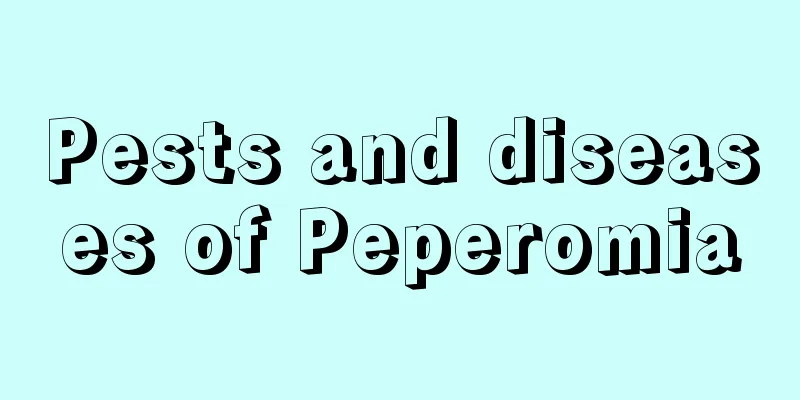Pests and diseases of Peperomia

Diseases of Peperomia rotThe most common diseases of peperomia are root rot and stem rot. Root rot is mainly concentrated on the roots and is caused by pathogens. It mainly harms young plants, but adult plants can also develop this disease if you don't pay attention. Stem rot, as the name suggests, is a disease that grows on the flower stems of the plant. It appears dark brown at the beginning, and then the disease gradually becomes more serious. It will slowly rotate around the neck and the cortex will rot. Both of these diseases are mostly caused by overwatering, which keeps the soil too wet, allowing bacteria and pathogens to infect the plants. Prevention and treatment measuresWatering should be moderate at normal times. Choose flower pots with good water permeability to avoid water accumulation in the pots. At the same time, practice the principle of " don't water unless the soil is dry, and water thoroughly when you do ." Water the plants with root rot killer diluted a thousand times every half a month. It is best to prevent and control the disease before it occurs, because once infected, the bacteria are likely to attach directly to the soil and be difficult to remove. Once infected, you have no choice but to change the pot and soil and disinfect everything. Anthracnose of PeperomiaThe main reason is that the air humidity is high, and the moisture on the leaves cannot dry out for a long time, which easily leads to the occurrence of diseases. It mainly harms unripe or ripe fruits, and can also harm flowers, leaves, main axes, etc. When the disease occurs, small black spots appear first, and then if no attention is paid, they will quickly expand, and then the small spots will connect into one, and the disease will quickly occur. Prevention and treatment methodsDuring the breeding process, it is best to do a good job of ventilation management, water in the morning, and use fungicides such as chlorpyrifos, benomyl, and thiram regularly for prevention and treatment, preferably for a period of half a month. It is best to prevent and control this disease before it occurs. Once infected with anthracnose, it is likely to destroy the entire plant. |
<<: Disease and Pest Control of Lyreleaf Coral
>>: What to do if the leaves of spiderwort wilt
Recommend
How to grow shell flowers
1. Maintenance methods 1. Temperature: Shell flow...
Varieties of starflower
Starflower Varieties: “New Elephant” Series It is...
How to grow crystal lotus
Characteristics of Crystal Lotus The appearance o...
What to do if hyacinth leaves turn yellow
1. Regulate moisture (1) Specific reasons: Too mu...
Cultivation methods and precautions of Schefflera variegated
1. The habit of this plant (1) First of all, it l...
Should I use a large or small pot for Strelitzia reginae?
Should I use a large or small pot for Strelitzia ...
How often should I water the money tree in summer?
How often should money trees be watered in summer...
What soil is best for clematis and how to prepare the soil
1. What kind of soil is best for Clematis? 1. Fer...
Lemon's growing environment and local conditions
Lemon growing environment and conditions Lemons a...
What should I do if the purple succulent grows too tall?
What does the leggy growth of purple succulent lo...
Suitable planting environment for pumpkin planting
Pumpkin Planting Conditions Pumpkin likes warm an...
Which month is best for taking cuttings of geraniums?
Geranium is recognized as a flowering machine. It...
How to manage the perennial roots of chayote during the winter
1. Methods 1. Apply winter fertilizer: In late No...
What fertilizer is best for green vegetables?
Time to fertilize green vegetables Before sowing ...
How to fertilize spoon lip orchid
1. Fertilizer selection When fertilizing the spoo...









